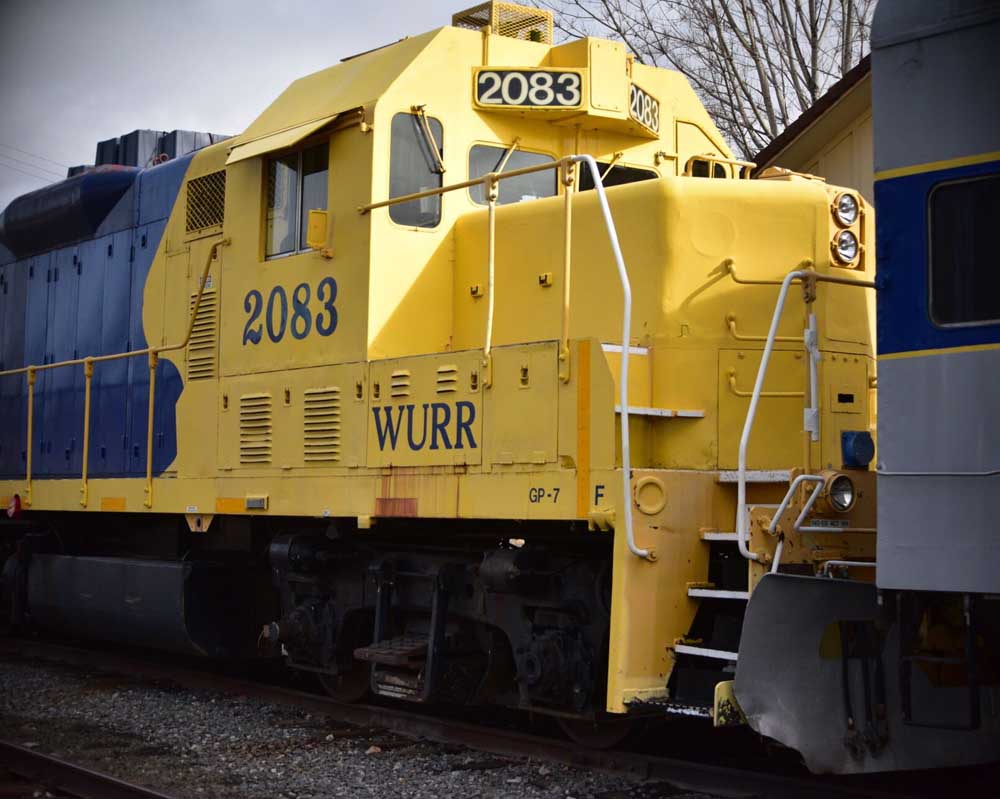Supporters believe Wallowa Union Railroad needs new management structure to continue
Published 12:00 pm Monday, March 27, 2023

- A Wallowa Union Railroad engine is parked in Elgin on Feb. 19, 2023, waiting for the Eagle Cap Excursion Train season to begin in the spring.
ELGIN — The story of the Wallowa Union Railroad dates back to 1908, the year when the railroad line from Elgin to Joseph was built.
Trending
When the steam engine reigned.
Today, the Wallowa Union Railroad may be at risk of joining the steam engine as a relic unless a strategic plan for its operation is developed.
David Arnold is a former board member and vice president of the Friends of the Joseph Branch, which manages the Elgin Railroad Depot and operates the Wallowa Union Railroad’s Eagle Cap Excursion Train that runs from Elgin to Minam about 20 times a year. He fears the railroad will not be able to continue operating another 15 years or more unless it changes its management structure to be more sustainable.
Trending
To make his point, Arnold refers to the poor condition of the railroad’s tracks between Minam and Joseph, a 44-mile stretch that trains can no longer travel due to the deterioration. He also cites maintenance work needed in other parts of the railway.
Arnold said people should look beyond such things as dilapidated tracks, though, for the root causes of the problem.
“Many times people look upon the symptoms as the problem, but what it really is, is a lack of a workable management structure,” the La Grande resident said.
Arnold believes a strategic plan needs to be developed for the Wallowa Union Railroad, complete with goals, fundraising strategies and defined roles. He said that for his proposed strategic plan to succeed, a general manager would have to be hired to make sure the plan is followed.
The cost of having a general manager running the Wallowa Union Railroad would be at least $100,000 a year.
Generating incomeArnold said if a general manager were hired, it would be important that the individual be responsible for applying for grants and taking other steps to obtain funding. Other responsibilities would include overseeing repairs to the rails between Minam and Joseph so the train could roll on them again. The improvement could boost the revenue stream of the Wallowa Union Railroad, which currently has one employee, in a number of ways, such as providing rental space to store rail cars for other companies and reducing the railroad’s dependence on tax credits it receives from the state to pay for maintenance work.
“You can’t rely on the sale of tax credits,” he said.
Arnold noted that during the Great Recession starting in 2008, the Wallowa Union Railroad stored rail cars for Union Pacific Railroad that it was not using due to the poor economy. According to Arnold, Union Pacific Railroad was paying the Wallowa Union Railroad $50,000 a month to park its cars on its rails in Wallowa County.
“We received $1.5 million in revenue,” he said, which helped the Wallowa Union Railroad pay off debt.
Wallowa County Commissioner Susan Roberts, a member of the Wallowa Union Railroad Authority Board, said storing cars is not quite the financial windfall some credit it with being because there are expenses the Wallowa Union Railroad incurs.
But Arnold contends that with enough cars stored on the tracks, the revenue would exceed expenses in a few months.
Opening up the 44 miles of rails in Wallowa County that are now closed would do more than allow for car storage. It would also likely boost the Eagle Cap Excursion Train by providing its riders more routes to travel and make it possible to export and import materials in and out of Wallowa County by rail instead of by truck, he added.
Arnold said the Oregon Department of Transportation has stated it would prefer that more shipments in and out of Wallowa County be moved by rail instead of truck because of safety concerns.
Safety at the forefrontUnion County Commissioner Matt Scarfo, also a member of the Wallowa Union Railroad Authority Board, said he would endorse having a full-time general manager if the railroad could afford the cost.
“I like the idea, but I don’t know if we could afford it,” he said.
Scarfo said he would not support the move if it meant the railroad would have less money to spend on maintenance work to make the railroad’s tracks safer.
“Safety will always be at the forefront for me,” he said. “Having a general manager would be secondary.”
General managers of years pastThe concept of adding a general manager to oversee the railroad isn’t a new one. The Wallowa Union Railroad had three general managers early in its history, more than 15 years ago, and each left within a year.
Arnold said one was never able to develop a good working relationship with the Wallowa Union Railroad Authority and another was hindered by personal financial problems and a poor work ethic. Arnold said one of the three did an excellent job but decided to leave after a short time because he believed he was not making enough money.
Despite this poor track record, supporters concur with Arnold that some sort of management structure is needed.
“I agree that it is a good idea,” said Ed Spaulding, president of the Friends of the Joseph Branch.
However, like Scarfo, he does not know if having a full-time general manager would generate enough revenue to justify the position.
Spaulding, though, is proposing a compromise. He suggests the authority board hire an individual who is already with the organization and working as a volunteer to oversee operations, at a salary of $1,000 a month.
Arnold said Spaulding’s idea has merit but it would be only a temporary fix.
“It would help but it would not provide a long-term solution,” he said.
The Wallowa Union Railroad Authority might find itself in a better position to have the funding needed to hire a general manager if it receives an infrastructure grant from the federal government. Arnold said that if the railroad were to receive a $10 million infrastructure grant, it would go a long way toward restoring the rails from Minam to Joseph to the point that railroad cars could run on them again.
“That would make a tremendous difference,” Spaulding said.
He believes that after the restoration work was completed the railway from Minam to Joseph could then be maintained for years with money from the sale of tax credits.
Arnold, though, fears that without a strong strategic plan in place, the railroad’s tracks would not be maintained as well as they could be, something that could again later take a toll on the railroad and result in its demise.
Today, Arnold wants to do everything he can to help Union and Wallowa counties from losing their investment in the Eagle Cap Excursion Train.
“That would be tragic,” he said, “because we have one of the most beautiful railroads in the country.”
This is the second in a two-part series looking at the future of the Wallowa Union Railroad’s Eagle Cap Excursion Train.









